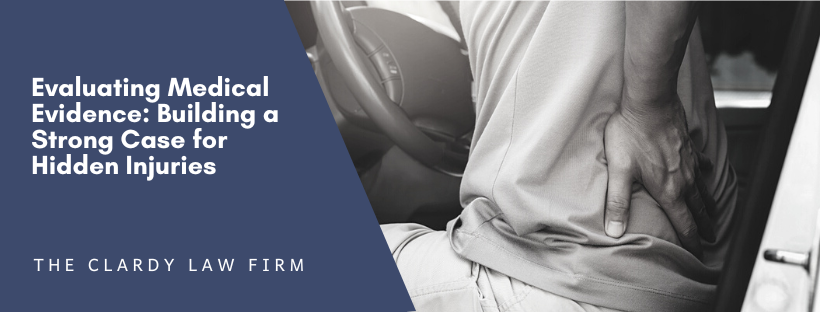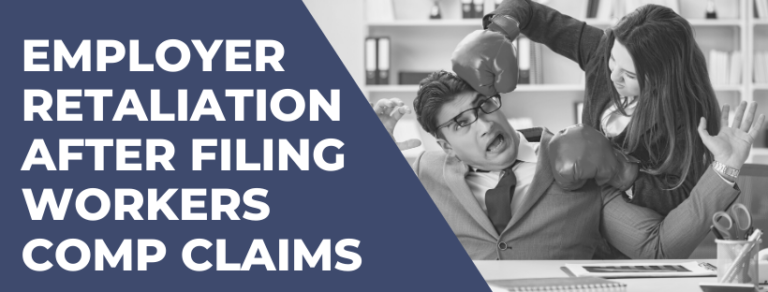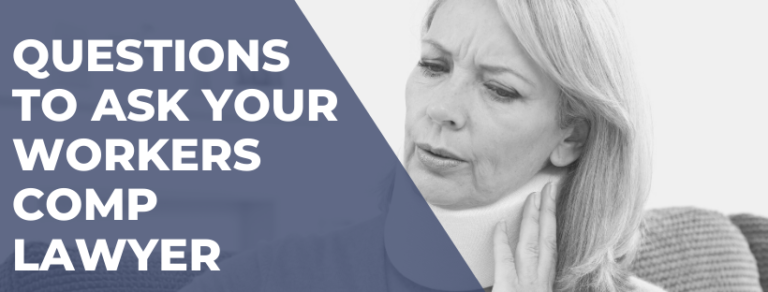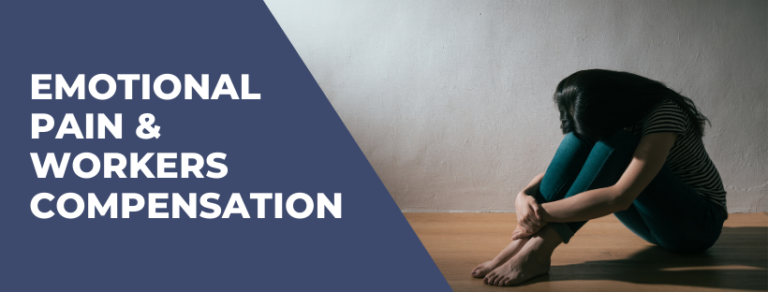Personal injury law is a complex and nuanced field where the strength of a case often hinges on the quality of medical evidence presented. In the aftermath of an accident, whether it be a car accident, slip-and-fall, or workplace incident, the immediate focus is often on visible injuries — broken bones, cuts, and bruises. However, some injuries may not be immediately apparent but can have profound and lasting effects on an individual’s health and well-being — these are known as hidden injuries.
Personal Injury Law and Medical Evidence
Personal injury law encompasses a wide array of cases where individuals seek compensation for injuries sustained due to the negligence or intentional actions of others. Central to these cases is the concept of liability — determining who is at fault for the accident — and assessing the damages suffered by the injured party.
In these legal proceedings, medical evidence is pivotal in establishing the nature and extent of injuries. It is a critical tool for both plaintiffs and defendants in proving or refuting the causal link between the accident and the injuries claimed.
Hidden Injuries
Hidden injuries, also known as latent or invisible injuries, refer to physical or psychological harm that may not be immediately apparent following an accident. These injuries often manifest days, weeks, or even months after the traumatic event, presenting unique challenges in diagnosis and treatment.
While hidden injuries may not be visible to the naked eye, their impact can be profound, leading to chronic pain, disability, and emotional distress. Common examples include traumatic brain injuries (TBIs), internal organ damage, whiplash, and post-traumatic stress disorder (PTSD).
In this article, we delve into the intricacies of evaluating medical evidence to build a strong case for hidden injuries in personal injury litigation. We explore the types of hidden injuries, the importance of medical evidence, evaluation strategies, and the role of legal representation in advocating for fair compensation.
Types of Hidden Injuries Commonly Encountered in Personal Injury Cases
- Traumatic brain injuries (TBIs): TBIs occur when a sudden blow or jolt to the head disrupts normal brain function. Symptoms may range from mild concussion symptoms, such as headaches and dizziness, to severe cognitive impairment and coma.
- Whiplash: Whiplash injuries result from the rapid back-and-forth movement of the neck, commonly experienced in rear-end car collisions. While symptoms may initially be mild, they can progress to chronic neck pain, headaches, and mobility issues.
- Internal organ damage: Blunt force trauma in accidents can cause damage to internal organs, such as the spleen, liver, or kidneys. Internal bleeding and organ dysfunction may not be immediately apparent but can lead to life-threatening complications if left untreated.
- Soft tissue injuries: Damage to muscles, ligaments, and tendons, often termed soft tissue injuries, may not be detectable through standard diagnostic tests like X-rays. These injuries can result in chronic pain, limited mobility, and decreased quality of life.
- Psychological trauma: Emotional and psychological injuries, such as post-traumatic stress disorder (PTSD), anxiety, and depression, are common yet often overlooked consequences of traumatic events. These hidden injuries can significantly impact an individual’s mental health and overall well-being.
Challenges in Diagnosing and Proving Hidden Injuries
- Delayed onset of symptoms: Hidden injuries may be delayed, with symptoms emerging days, weeks, or even months after the accident. This delayed presentation can complicate diagnosis and make it challenging to establish causation.
- Subjectivity of symptoms: Unlike objective injuries with visible evidence, hidden injuries often rely on symptoms reported by the injured party. Assessing the severity and impact of these symptoms can be subjective and may vary from person to person.
- Medical misinterpretation: Some hidden injuries, such as TBIs and psychological trauma, may be misunderstood or misdiagnosed by healthcare providers, leading to delays in treatment and challenges in proving the extent of the injury.
Related: How Long After a Car Accident Can You Claim for an Injury?
Importance of Medical Evidence in Personal Injury Cases
In personal injury litigation, medical evidence is the cornerstone for establishing the extent of injuries, their impact on the plaintiff’s life, and the causal link between the accident and the alleged harm.
Role of Medical Evidence in Establishing the Extent of Injuries
Objective documentation: Medical records, diagnostic tests, and physician reports objectively document the plaintiff’s injuries. This evidence is crucial for demonstrating the severity and nature of the injuries to insurance adjusters, opposing counsel, and jurors.
- Treatment and prognosis: Medical evidence also includes information about the plaintiff’s treatment plan, prognosis, and expected recovery timeline. This helps stakeholders understand the medical interventions required and the long-term implications of the injuries on the plaintiff’s life.
- Expert opinions: Medical experts, such as physicians, surgeons, and specialists, play a vital role in interpreting medical evidence and providing expert opinions on the causation and impact of injuries. Their testimony lends credibility to the plaintiff’s claims and strengthens the case for compensation.
Impact of Medical Evidence on the Strength of a Personal Injury Case
- Corroboration of allegations: Medical evidence corroborates the plaintiff’s claims of injury, providing tangible proof of the harm suffered due to the accident. This substantiation is essential for overcoming skepticism and establishing the legitimacy of the claim.
- Quantification of damages: Medical evidence enables quantification of damages, including medical expenses, lost wages, and pain and suffering. By documenting the economic and non-economic losses incurred by the plaintiff, medical evidence forms the basis for calculating fair compensation.
- Rebuttal of defense arguments: In cases where liability is contested or the extent of injuries is disputed, medical evidence can be used to refute defense arguments and assertions. Through comprehensive medical documentation and expert testimony, plaintiffs can counteract attempts to minimize or deny liability.
Legal Standards for Admissibility of Medical Evidence
- Relevance and materiality: Medical evidence must be relevant and material to the issues in dispute to be admissible in court. It should directly relate to the injuries claimed by the plaintiff and contribute to the resolution of the case.
- Reliability and trustworthiness: Courts assess the reliability and trustworthiness of medical evidence, considering factors such as the qualifications of the medical provider, the accuracy of diagnostic tests, and the consistency of medical opinions.
- Authentication and chain of custody: Medical records and reports must be properly authenticated and maintained to ensure their admissibility in court. Establishing the chain of custody and demonstrating the integrity of the evidence strengthens its credibility and persuasiveness.
Related: Find Out Why You Need to See a Doctor After an Auto Collision
Strategies for Evaluating Medical Evidence
Effectively evaluating medical evidence is essential for your attorney to build a strong case for hidden injuries in personal injury litigation. This section outlines key strategies for gathering, organizing, and presenting medical evidence to support your personal injury claim.
Thorough Medical Examinations and Documentation
- Prompt medical attention: Always seek prompt medical attention following an accident, even if you do not immediately exhibit symptoms of injury. Early evaluation and documentation can help establish the causal link between the accident and any subsequent health issues.
- Comprehensive examinations: Request a thorough medical examination that encompasses a detailed assessment of your physical and psychological well-being. Encourage healthcare providers to comprehensively review your symptoms, medical history, and functional limitations.
- Detailed documentation: Ensure that healthcare providers meticulously document their findings, including observations, diagnostic tests, treatment plans, and prognosis. Comprehensive documentation strengthens the credibility of medical evidence and provides a clear record of your injuries and their progression over time.
Utilizing Diagnostic Tests and Imaging Studies
- Diagnostic precision: Ask medical practitioners for appropriate diagnostic tests and imaging studies to accurately assess the extent of injuries and detect hidden conditions. From X-rays and MRIs to CT scans and psychological assessments, diagnostic tools provide objective evidence of injury and help guide treatment decisions.
- Interpretation by specialists: Consult with medical specialists, such as radiologists, neurologists, orthopedic surgeons, and psychologists, to interpret diagnostic test results and provide expert opinions on the nature and severity of injuries. Specialized expertise enhances the accuracy and reliability of medical evidence.
Consulting Specialists for Comprehensive Evaluation
- Multidisciplinary approach: Emphasize the importance of a multidisciplinary approach to evaluating hidden injuries, particularly those involving complex medical issues or overlapping symptoms. Collaboration among medical specialists facilitates a comprehensive assessment of your condition and ensures all relevant factors are considered.
- Expert testimony: Ask your personal injury lawyer to prepare medical experts to provide clear and compelling testimony regarding your injuries, their causation, and their impact on your life. Expert witnesses play a crucial role in educating judges and jurors about the medical aspects of the case and validating your claims.
Importance of Documenting Symptoms and Limitations
- Patient reporting: Consistently report your symptoms and limitations to healthcare providers, ensuring that all relevant information is documented in medical records. You should describe your experiences accurately and comprehensively, including details about pain, discomfort, mobility issues, and emotional distress.
- Objective corroboration: Ask your lawyer to seek objective corroboration of subjective symptoms through medical testing, functional assessments, and third-party observations. Objective evidence strengthens the credibility of your reported symptoms and provides tangible support for your injury claims.
Building a Strong Case for Hidden Injuries
Successfully proving hidden injuries in a personal injury case requires careful preparation and strategic presentation of medical evidence. This section outlines key steps for building a compelling case that substantiates the existence and impact of hidden injuries.
Gathering and Organizing Medical Records and Reports
- Comprehensive record collection: Your lawyer will obtain all relevant medical records and reports pertaining to your injuries, including emergency room visits, hospitalizations, physician consultations, diagnostic tests, imaging studies, and rehabilitation sessions. They will liaise with medical staff to ensure that records are complete, accurate, and up-to-date.
- Chronological organization: Your lawyer will organize medical records in chronological order to create a clear timeline of your treatment and recovery journey. This recorded sequence helps stakeholders understand the progression of injuries, treatment interventions, and any complications or setbacks encountered along the way.
- Highlighting key findings: Your attorney will identify and highlight key findings within medical records, such as diagnostic test results, physician notes, and treatment recommendations. They will emphasize objective evidence that corroborates your reported symptoms and supports the claim of hidden injuries.
Establishing a Causal Link between the Accident and Hidden Injuries
- Detailed accident reconstruction: Your lawyer will ask you to provide a detailed account of the accident circumstances, including the date, time, location, and contributing factors so that they can utilize accident reconstruction techniques, witness statements, and expert testimony to establish how the accident occurred and its potential impact on your health.
- Medical opinion on causation: Your attorney will obtain medical opinions from qualified experts linking your injuries to the accident. Expert witnesses can analyze medical records, diagnostic tests, and other evidence to establish a clear causal connection between the accident trauma and the onset of hidden injuries.
Presenting Compelling Medical Evidence to Support the Claim
- Expert testimony: Your legal team will prepare medical experts to testify about the nature, severity, and causation of your injuries. Expert witnesses should effectively communicate complex medical concepts to judges and jurors, providing clarity and credibility to their claims.
- Visual aids and demonstratives: Your lawyer may use visual aids, such as anatomical diagrams, medical images, and multimedia presentations, to enhance the understanding of medical evidence. Visual representations help jurors visualize injuries and comprehend the physiological impact of the accident trauma.
Addressing Challenges and Potential Counterarguments
- Cross-examination preparation: Your legal counsel will anticipate potential challenges and counterarguments raised by the defense regarding the existence or severity of hidden injuries. They will prepare witnesses, particularly medical experts, for rigorous cross-examination and ensure they can effectively address opposing counsel’s questions.
- Rebuttal evidence: Your attorney should have rebuttal evidence ready to counter defense assertions and undermine efforts to discredit your claims. This may include additional medical testimony, supplemental medical records, or expert opinions refuting alternative explanations for your injuries.
By meticulously gathering, organizing, and presenting medical evidence, attorneys can build a compelling case that convincingly demonstrates the existence and impact of hidden injuries, ultimately securing fair compensation for your losses.
The Role of Legal Representation in Evaluating Medical Evidence
Navigating the complexities of evaluating medical evidence in personal injury cases requires the guidance of experienced legal professionals.
Importance of Experienced Personal Injury Attorneys
- Legal knowledge and guidance: Personal injury attorneys possess in-depth knowledge of the legal principles, procedural rules, and case precedents relevant to evaluating medical evidence in personal injury litigation. Their experience enables them to navigate complex legal issues and advocate effectively for their clients.
- Case evaluation and strategy development: Attorneys conduct comprehensive case evaluations to assess the strengths and weaknesses of the plaintiff’s claim, including the quality of medical evidence available. Based on this evaluation, they develop strategic litigation plans to maximize the likelihood of a favorable outcome for the plaintiff.
Collaborating with Medical Experts
- Identifying qualified medical experts: Attorneys leverage their professional networks to identify and retain qualified medical experts with relevant expertise in assessing and diagnosing hidden injuries. These experts play a crucial role in providing expert opinions, interpreting medical evidence, and educating the court about the plaintiff’s injuries.
- Expert witness preparation: Attorneys work closely with medical experts to prepare them for deposition and trial testimony. This preparation includes reviewing medical records, discussing case-specific issues, and conducting mock examinations to ensure that experts can effectively communicate their opinions to judges and jurors.
Advocating for Fair Compensation Based on Medical Evidence
- Damages assessment: Attorneys use medical evidence to assess the full extent of the plaintiff’s damages, including economic losses (such as medical expenses and lost wages) and non-economic damages (such as pain and suffering, emotional distress, and loss of enjoyment of life). They meticulously quantify these damages to pursue maximum compensation for their clients.
- Negotiation and settlement: Armed with compelling medical evidence, attorneys negotiate with insurance companies and opposing counsel to reach a fair settlement that adequately compensates the plaintiff for their injuries and losses. They advocate forcefully for their client’s rights and interests throughout the settlement process.
- Litigation advocacy: In cases where settlement negotiations are unsuccessful, attorneys zealously advocate for their clients in court. They present persuasive arguments supported by medical evidence, cross-examine opposing witnesses, and leverage their trial advocacy skills to secure favorable verdicts for their clients.
Legal representation is pivotal in evaluating and leveraging medical evidence to support the plaintiff’s claims in personal injury litigation. By partnering with experienced attorneys, plaintiffs can strengthen their cases and pursue just compensation for the injuries and losses they have endured.
If you or a loved one have suffered hidden injuries due to another party’s negligence, it is imperative to seek experienced legal representation. A skilled personal injury attorney can navigate the complexities of evaluating medical evidence, advocate forcefully on your behalf, and pursue the compensation you deserve.





